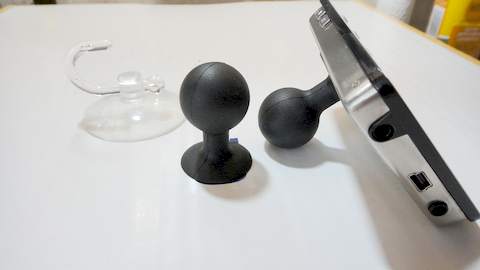FAQ: My Nano needs a nicer stand
This is a really expensive sucker from Germany (2.90 EUR = USD 4$)
(the shop is : http://www.pearl.de - ArticleNr: HZ1823)
maybe you find something else in a mobile-phone-shop,
or something similar in an bathroom-shop
and use the good old Glue Gun to fiddle a little bit.
It is better than all other stands, because it is always together.

